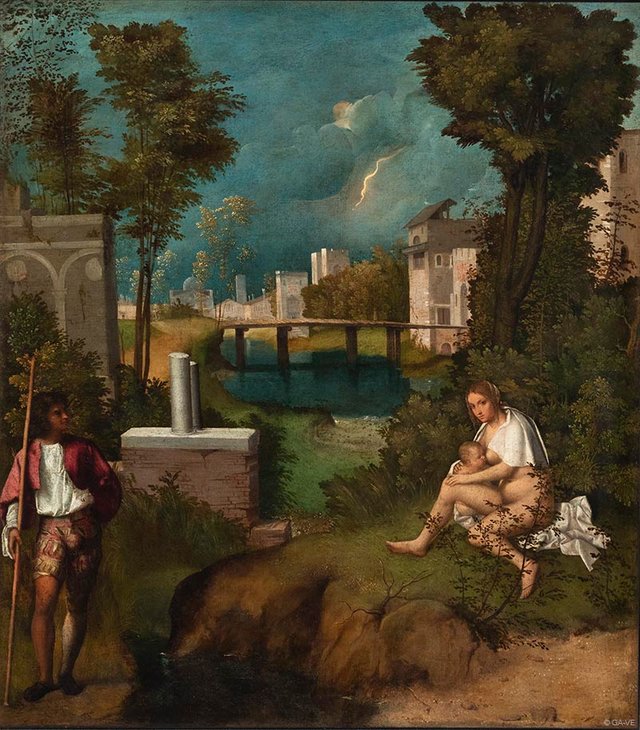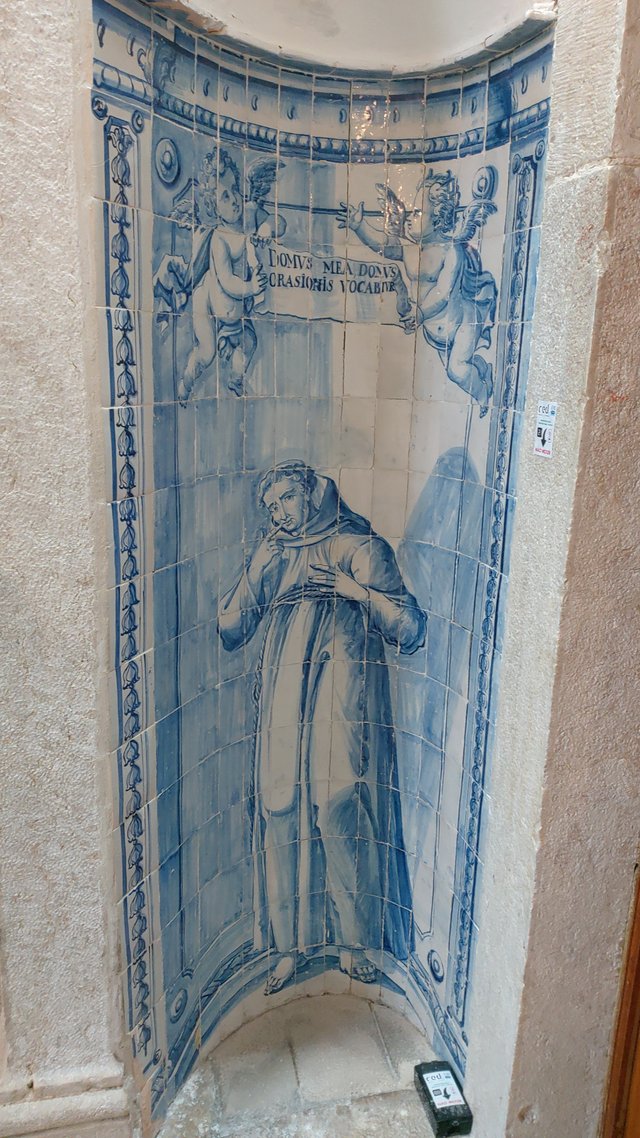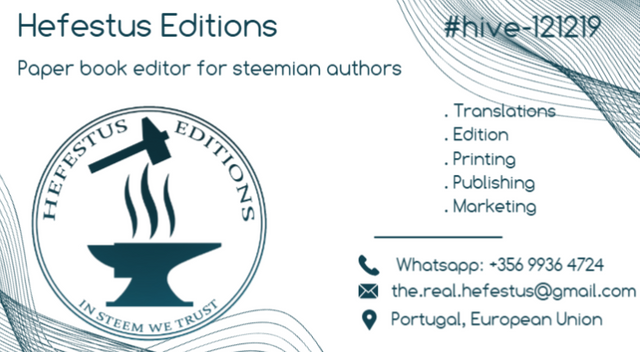Was it a holo-deck or a holo-sphere? (Letters 6.2)
As I agree with @ty-ty that this conversation is getting too technical and, ence, both diverging and less interesting, I think it's time to open the can of worms. The larger issue at play here, I think is one that needs to be dealt with in the most openminded fashion: what does the space-time continuum mean in relation to conscience, is all conscience inter-related, and what is the true purpose to our existence as conscious beings? Or, what are we here for and how does that relate to the multiverse? Or yet still, is consensual reality the real reality?
Is it true that‚ there is a subjacent story to interpret‘? I think of portraits, I think of landscapes, I think of still lives. And I cannot imagine any stories lying or laid down within such paintings. Let me not be misunderstood – I do not deny that the artist may have had a story in mind while painting, but such story is not ‚subjacent‘. Secondo me: I think of paintings as invitations to look and look deeper, not of requests to reconstruct nor to interpret something.
I would beg to differ and to say that it depends, taking as an example the painting by Giorgione, the Tempest. Although you may make what you want of it, it was built as a riddle, as most paintings that were hung in Venice's walls in those days. To guess what the author meant with the painting was, once, a fad. Those that were rich enough to pay for the said paintings amused themselves and their company by trying to guess at the true meaning of the painting. And the Tempest is one of the most accomplished examples of a difficult puzzle, (You can know more about this particular painting, for instance, by watching Waldemar Januszczak's The many perplexing interpretations of the Tempest).

The following piece of art was also produced with a specific intention and interpretation in mind. That of reminding the friars of the importance of keeping their silence. I guess you can compare it to an early renaissance no smoking wall sign.

I personally like to measure therefore the quality of a painting in its ability to make my own perspective recognisable to myself. If I can see the world around me with new eyes caused by a painting – this impact I regard to be the painting's highest value and the artist’s topmost intention (which needs no further interpretation).
On one side, it is undeniable that in all forms of human creation there is an underlying intention, if not an explicit or, perhaps, hidden meaning. And lots of those works contain hidden symbolisms that can be interpreted by whoever owns the correct decoding formula, or the same code.
Having said this, I believe that there is a different way to look at and explore a piece of art and that is through intuition of feeling. What does that work feel like to you? In that case it is up to you to ignore what the author tried to convey either through particular or universally understood signs, and enter the interpretation as an empty vessel ready to receive the feeling it transmits to you and to interpret it as a total projection of your mind. Does it imply communication with the author, or is it just you, generating that intuition inside your mind/soul/prana, (take your pick)? Is the feeling you generate self contained or does it feed back to the author through the space time continuum through some mechanism we can intuit to relate to reality by consesus? Can we even be sure that the work today is the same as it was yesterday, and it hasn't changed in everybody's mind since we last interacted with it? Is there a nexus between observation and feedback to the artist? Does our intense concentration on something produce change in it? If it did, being retroactive, would we be aware of it?
I'm sorry for so many questions and no answers, but I think that the way to go here is, maybe, pose the questions first. What does a retroactive or loop interaction between the observer or multiple observers and the art, or artist produce in terms of change? We can assert that the change is peculiar to the individual doing the experience, but we can also presume that if such a change occurs, we cannot possibly be aware of it. And, that, to me, is the challenge your idea creates. I'm not opposed to the idea per se, but I find it generates many interesting questions that need answering. Also, the further away we move from symbolic interpretation, the more these questions become important.
Having made these steps it seems close at hand to me to think and to speak of a relationship and even an interaction between artist and recipient: both try to go side by side discovering and revealing the human condition. So, when I go into this process and I try to describe what happens in my mind, then I have to use metaphors and images to get a lever for words, and in this way I want ro return to my phrase that "picture walking" is something like perpetual change between psychography and following ideas. It is – I’d like to accomplish – something like a mixture of hermeneutics and fantasy.
Correct me if I'm wrong, so I can think about this: In this idea, you separate yourself into an intuitive part that interacts and experiences the work (and I do not care to distinguish if it's picture walking by pure imagination or an induced allucination, as they result in the same), and a rational part that is limited by code and reference system to express your experience to others in all it's dimensions. Is that it?
Apart from this, I believe I can understand where you are getting at, but still, what I see is, at some point in this chain, a mechanism of some kind appears that limits the possibility of fully understanding or fully translating or fully communicating the intuitive feeling you have while interacting with the work. Can you contradict the existence of this conflict?
@hesfestus 07.03.25

Thanks. For thinking and sharing.
Now it's up to me for re-reading and re-thinking.
I'm already rethinking it, as I pose those questions to myself too. ;)
;-)
Other question:
Would you regard Jeff Kubitz' very long comment as 'Letter 7.1'?
In more than one point it looks like that...
https://steemit.com/@jeff-kubitz/sss69u
Yes. Let's take it up. It does carry meaning. Will you, or shall I?
@ty-ty. never mind. I'll publish it as 7.1
Well said.
It's now published, I intend to comment on it but only later in the day. If you want to add something, or comment his answer, now, would be the time... (Well, now, means until five'ish in the afternoon. (Berlin Time)
he-he
;-)
@solperez
Thanks. :)
You are really going for it. I would like to join but I am currently brain dead. I did notice however that in the "Tempest" the mother suckling her child had recently finished bathing in the stream and the babe also. The man is guarding them while they dry. It was common before plumbing that everyone bathed in stream, lakes, ponds rivers, even the ocean if that was near. Perhaps key to the Tempest might be the storm in the background. Oh looking more closely, I see the man has bathed as well is nearly dry. What is that metallic post?
Anyways, good discussion.
Yes... It's a brain twister and that, on the background isn't a solar panel instalation. :D
I do not regard such process as interpretation - it's decoding, as you've already said. It is like the process while scientists try to decode some inscriptions on pillars or from manuscript ashes. AI is able to help in decoding. But the hereafter following process of interpretation has another quality.
The riddle dimension is not the art dimension. I think both to be 'rectangular' i.e. independent from each ohter. The riddle dimension may have served as means to a pecuniary end, and in this regard as the economic base for the artist to produce his artwork. To solve the embedded riddle has almost nothing to do with getting involved to the art dimension. The art dimension secondo me lies beyond rationalism and scientism. It lies even beyond the intentions of the artist concerning the consciously known / knowable parts of intention and motivation.
I would not deny any artwork to have more than the art dimension, but I have in this other dimensions only interest in so far they can lead and guide me to the art dimension.
(This gives me the opportunity to remark that interest always has a goal and therefore needs pre-decisions.)
I still think we are talking about two diferent steps of the process, so I will rethink how to explain it. And I also believe that this will end up with us trying to define beauty and extasy.
I will rethink and try to explain what I consider to be the interpretation process. What you are stepping into seems to me to approach the concept of some kind of religious experience, or perception without rationalization.
No, I do not separate myself into two or more parts. Although I do not feel homogeneous I do not separate myself into parts.
There is secondo me a crucial difference between 'separating' and 'distinguishing': You can distinguish the reverse of the medal from its front side. You even can neglect one of the sides. If you want to separate each other, you'll have to change medium / dimension: You could take a picture of the reverse and thus get rid of the front.
So, every separation has to be inquired on its 'figurativeness' i.e. on its model character.
Returning to my comment, I want to repeat the words:
As I said... We are diving into Religious Extasy. (For the effect of my understanding of what you mean, separate or distinguish results in the same. Maybe I just did not use the most accurate word. I didn't say divide or split, and I really wasn't trying to signify that you broke yourself into two different parts). I can now safely think about this.
Okay, you got my point on separation versus distinguishing and that's not only enough, it is important. From this point we can easily get distance from the special wording as we can be assured to point to the same.
This I did not understand.
I mean that you are pointing to experience art in the same way we experience the divine: as something meaningful without a possible translation into the rational.
Yes & No.
The seen parallel is existent,
but parallels might be misleading.
(Seems impossible by the geometric point...)
[edit]
..misleading since it is possible there are more parallels then the first one seen.
It's just a point of comparison for reflection.
Comparisons are like models - they gain influence on the reflection.
The more beautiful the model looks and the more fitting the comparison seems, the bigger is the influence - be it justified or not.
Just a point. Not a full image. :)